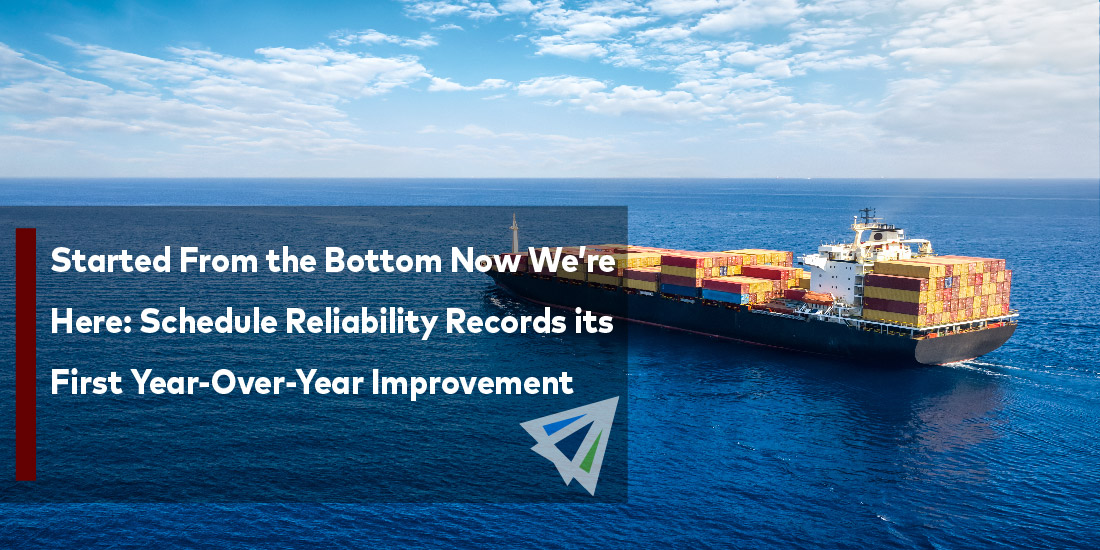Started From the Bottom Now We’re Here: Schedule Reliability Records its First Year-Over-Year Improvement
In the beginning of the year, schedule reliability looked bleak. Now, schedule reliability and delays among container carriers and globally are steadily improving.
“Global schedule reliability seems to have broken the trend seen since the start of this year,” Alan Murphy, CEO of Sea-Intelligence notes. He continues to say, “this also marked the first time since the start of the pandemic that scheduled reliability has improved year-over-year.”
Maybe after two years of adjusting to various challenges, that started off due to the pandemic, things are not only being learned, but being better managed as well.
Schedule Reliability Outlook for the U.S. East Coast
Schedule reliability remains up from July 2021, by five percentage points to be exact, and according to Sea-Intelligence, it is continuing to trend upwards.
However, last month for on-time performance, the East Coast slipped 2.7 percentage points to 15.9 percent – which is down from 20.8 percent July 2021 – data from a Global Liner Performance report by Sea-Intelligence Maritime Analysis shows.
The East Coast has also seen a great deal of volume, as retailers shifted some of their Asian imports to the East and Gulf Coast in an effort to avoid substantial risk with the labor contract discussions happening out on the West Coast.
As a result, Asian imports throughout East Coast ports in the month of July increased a little over 14 percent year-over-year, the Journal of Commerce reports. Now, it is likely that the East and Gulf Coasts could continue to see congestion issues throughout peak season, as many retailers committed to their routing decisions they made earlier this year.
Furthermore, schedule reliability at East and Gulf Coast ports have declined for three consecutive months and on-time performance in July was at the lowest figure recorded for that month in that region, data shows.
Schedule Reliability Outlook for the U.S. West Coast
Schedule reliability progress is being shown out on the West Coast. Schedule reliability year-over-year on the West Coast improved to 11.5 percentage points from July of last year, which marks the second consecutive month of year-over-year improvement – the JOC reports.
The West Coast has also seen improvement for seven consecutive months this year in regards to vessel on-time performance. But one thing to note is the July on-time reliability (of 27.1 percent) is still the second lowest recorded figure for this month on this trade lane, Sea-Intelligence states.
As previously mentioned above, cargo volume growth at West Coast ports slowed this year with retailers moving some of their Asian imports off to the East or Gulf Coasts.
Specifically, the West Coast share of U.S. imports from Asia in the first half of this year were down to 58.7 percent. Last year during the same time period, U.S. import West Coast shares from Asia were at 61.5 percent, data from the JOC shows. This tells us that the major West Coast gateways have experienced less congestion than they did in 2021.
Looking Ahead
As always, if you would like more information regarding this topic, contact our team at InterlogUSA and we will be happy to assist you on any questions or comments you may have! In addition, we have our weekly market updates that can provide you with relevant freight news, updates, developments across the industry, and more.
